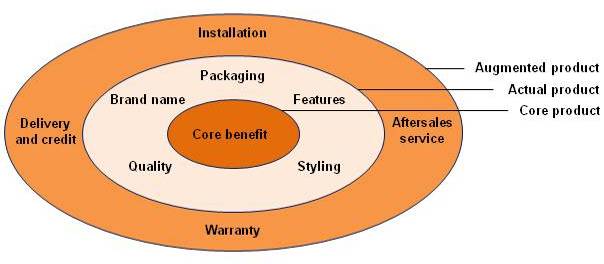Concept development
A concept should be built on a fit between the company's strategy and consumer needs; it should embrace the company's own identified strengths. Therefore, you must be clear about the concept fit with your product portfolio and the concept needs to be described properly - ideally according to the potential target consumers. All aspects will be discussed in the following.
Product portfolio decision: Does it fit your company strategy? How does it affect your current product portfolio (product, product lines, product classes etc.)? Does it complement your portfolio or does it interfere with some of your products? How does the concept fit with what your company stands for?
Concept description: In order to know what information needs to be communicated to consumers, you first must understand the product concept itself. What is it made of? How can or does it satisfy consumers? It is important to understand how consumers perceive a product in order to get an idea of its benefits and how the information stimuli ('cues') involved relate to actual product attributes (Steenkamp & van Trijp, 1996; Steenkamp, 1990).
Food products can be described according to sensory, health, convenience, and process attributes. Examples are:
- sensory: appearance, texture, flavour
- health: nutritional value, fat content
- convenience: shelf life, cooking duration, portionable packaging
- process: freshness, production system, animal welfare, feed composition.
Information stimuli are used to infer the above attributes and are important for communicating the concept. These are concrete pieces of information that enable the consumer to form a judgement of the product benefits and they are usually divided into intrinsic cues (based on physical or technical product characteristics) and extrinsic cues (all other information related to the product, such as price, brand, nutritional information).
Figure 7 provides you with a view of the elements that constitute a product. Marketers often distinguish between three levels: core, actual, and augmented product. The core product refers to the main benefit your customers derive from consuming the product. The actual product extends the core benefit to additional product characteristics. The augmented product finally extends the actual product to value-adding dimensions in particular services, such as product warranties.

Figure 7. Three levels of product (adapted from Kotler et al., 2008).
Specification of target market: When developing the concept, you must obviously think about your target group. This is especially relevant when tailoring the information cues to the consumers. Preliminary segmentation can be based on a variety of criteria. Try to identify your potential consumers based on what they consume (product class usage) and what kind of consumer will be looking for the benefits you want to offer. Furthermore, you can apply socio-demographics (such as sex, age, employment, lifestyle etc.). One shortcut is to identify competing products that are similar to your concept. Bear in mind that consumers may regard other products as alternatives that you have not thought of.
In summary, the most prominent selection criteria are product class usage, demographics, innovativeness, lead-user criteria, market expert criteria, lifestyle group membership, or even the general population.